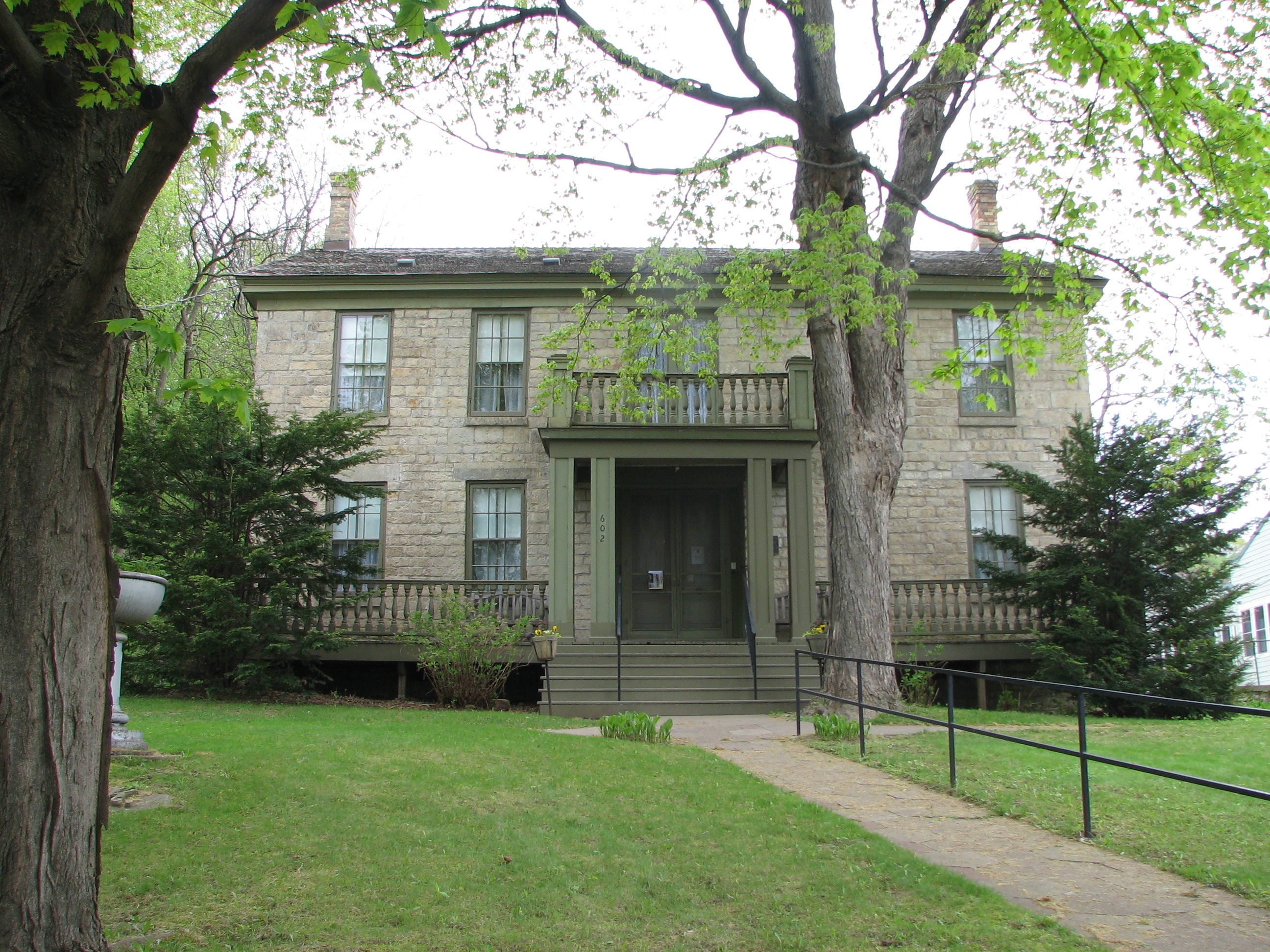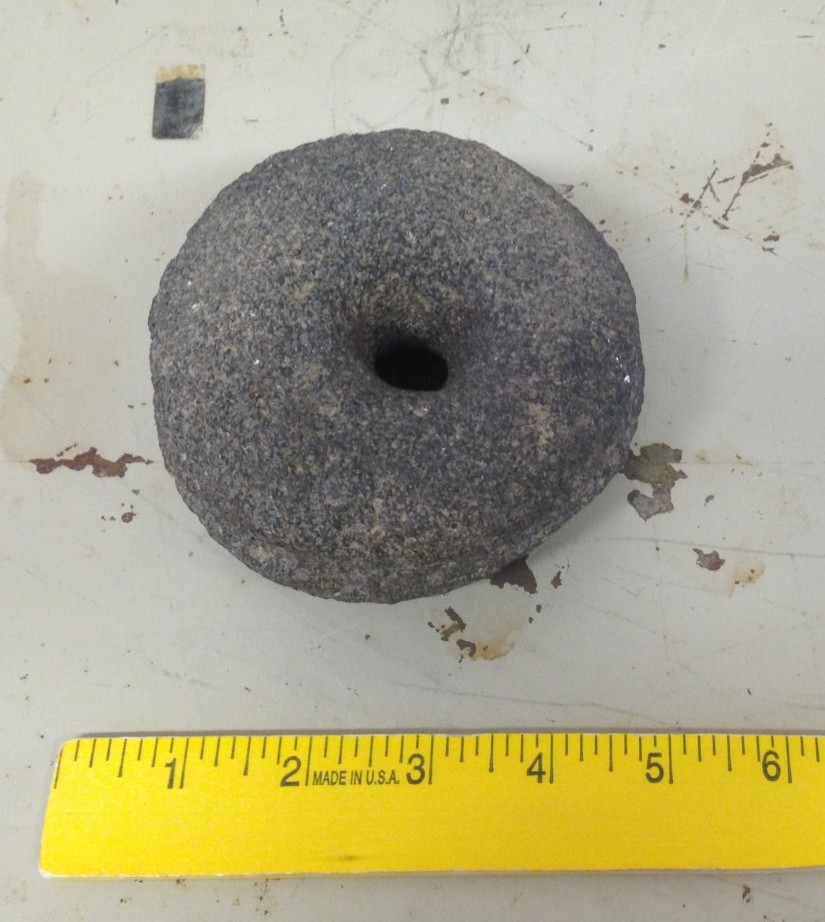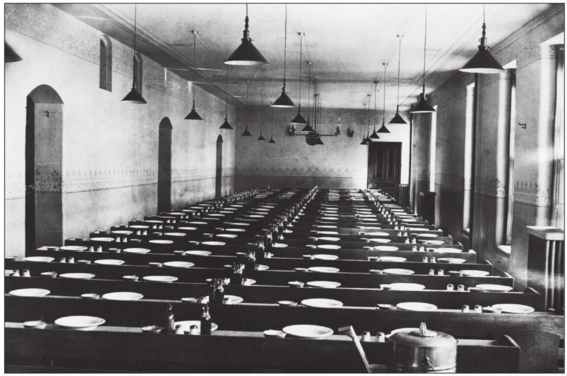This issue: Contents
Tuesday, April 19, 2016
- Editor’s Note
- WCHS News: 75th Annual Warden’s House Open House
- WCHS News: WCHS Internship & Scholarship
- What Is This Thing?!
- Old News: Historical Fine Dining
- Featured Article: Powers in Prison
Editor’s Note
Hello everybody! Can you even believe how nice it’s been the last few days?! I’m still half expecting good ol’ Minnesota Weather to throw us a curve ball here and dump one last snowfall on all our heads.
Speaking of curve balls…be sure to check out The St. Croix Base Ball Club’s 2016 schedule for all your vintage base ball needs.
In today’s newsletter, you’ll get your last reminder for our 75th Annual Warden’s House Open House this Sunday!
You’re also running out of time to submit your applications for our 2016 scholarship and internships! If you’re planning on putting your hat in the ring for either, you must have your application to us by April 30th.
Of course, we also have another mystery item down in today’s “What Is This Thing?!” section!
We’ll take a look at a restaurant review from 138 years ago for our slice of Old News.
And finally, we’ll close out by looking at the life of Martin Powers who was not only a long-time prison guard for the Minnesota State Prison, but a victim of a vicious inmate attack, and (very briefly and only technically) warden of the old prison.
Oh! And before closing, if you’re attending the Minnesota Alliance of Local History Museums conference next week, be sure to say “Hello!” if you see me. I’m looking forward to meeting and greeting with everyone there!
Sean Pallas
Historical Messenger editor and Warden’s House Site Manager
spallas.wchs@gmail.com
WCHS News
 75th Annual Warden’s House Open House
75th Annual Warden’s House Open House
The Washington County Historical Society will launch its milestone 75th touring season at the Annual Warden’s House Open House this Sunday, April 24th from Noon – 4:00 PM! This is a free event.
At the Open House, you’ll get a sneak peek at the museum’s newest exhibits on early immigrants into Washington County, local “last man’s clubs” of the Civil War and World War I, and the 100th anniversary of the Stillwater High School year book – the Kabekonian.
You’ll also be invited to enjoy live music provided by students of Mary Taylor Allen, sample delicious treats and snacks, and sip on coffee generously provided by Caribou Coffee.
From 1853 to 1914, the Warden’s House was the home of 13 different wardens of the original Stillwater Prison. For the last 75 years, the historic home built by the Minnesota Territorial government has been operated as a Victorian life and prison museum by the Washington County Historical Society.
The Warden’s House touring season runs May through October with tours held Thursdays through Sundays starting on every hour from 1:00 to 5:00 PM
For more information contact Sean Pallas at 651-439-5956 or spallas.wchs@gmail.com.
Other Events
WCHS News
WCHS Internship & Scholarship
The Washington County Historical Society is inviting post-secondary students to apply for a paid summer internship position at the Warden’s House Museum in Stillwater and the Hay Lake School Museum in Scandia. The deadline for applications is April 30th, 2016.
The internship program introduces students to the day-to-day workings of a regional history museum and provides an opportunity to apply academic skills and training in a unique working environment.
Application Process
Please send application letter, resume and two letters of reference by April 30th, 2016 to:
Washington County Historical Society, c/o Internship Committee, P.O. Box 167, Stillwater, Minnesota 55082
Qualifications: The intern must be an undergraduate or graduate student majoring in History or a related field. S/he should have good English and communication skills, be reliable and able to work both as a team member and independently. S/he should have creativity, pay attention to detail, present him/herself well, and enjoy working with the public.
Position Overview: The 10-week internship is a mixture of training and hands-on experience. The intern will be invited to learn about day-to-day operations of a small history museum, including interpretation, exhibit displays and design, collections care and preservation of artifacts. Opportunities will be offered to attend board meetings, participate in fundraising activities, assist with Society sponsored events and contribute to the quarterly newsletter.
Requirements: Interns will be asked to design and complete a project that will benefit both themselves and WCHS.
Supervisory Procedures: The supervisor will work with the intern to set goals, both personal and objective, to be tracked throughout the internship.
The internships are made possible by an annual grant from the DeLonais Foundation.
Scholarship
The goal of the Washington County Historical Society Scholarship program is to encourage historic preservation and interpretation, and to encourage students to study history by providing financial assistance in the form of an educational scholarship.
This scholarship is available to a graduating senior enrolled in a Washington County high school, or a student in a college or university program currently residing in Washington County (as a permanent residence) who is focusing on history, American studies, architecture, or a history-related field of study.
Applications must be submitted before April 30th, 2016.
Please carefully review, complete, and submit the following scholarship application form:
2016 Scholarship Application
Submit applications to:
Washington County Historical Society
c/o Scholarship Committee
P.O. Box 167
Stillwater, Minnesota 55082
Applicants must also:
– Have a grade point average of 3.0 or higher
– Be a member of the Washington County Historical Society or have an immediate family member(s) who is a member of the Society.
The Scholarship Program is facilitated and managed by the Washington County Historical Society Board of Directors and administered by a designated committee.
The scholarship is made possible by a generous grant from the DeLonais Foundation.
What is This Thing?!

What Is This Thing?! (Round 33)
What?! What did you say? I’m sorry! The neighbors are playing their records too loud, they must have one of last issue’s What Is This Thing?! attached to their players!
If you still can’t tell what last week’s artifact is – then here’s a helpful side view that will probably clear up any more confusion.
Yes, last week’s item is indeed a record player speaker, specifically an upgrade from the standard horn for an Edison cylinder record player. This particular horn was painted to look like a flower to give the piece a bit of color and class an otherwise plain metal speaker would be missing. But look at the size of this thing! This horn is like the Victorian era equivalent of Bose speakers!
Thank you to everyone who ventured an answer and now onto today’s challenge!
Can you identify the WCHS artifact photographed above? Can you guess its use? If you’d care to venture an answer, you can send an email to me at spallas.wchs@gmail.com, tweet @WCHSMN, or post your guess on our Facebook page.
Good luck!
Full Image
Old News
Historical Fine Dining
By 1878, Stillwater was starting to become a bit more cosmopolitan. The lumber industry was making a lot of people a whole lot of money. So, it was natural that a few creature comforts started to creep into this former frontier town. For example, in the very same issue of the Messenger that this article appeared an advertisement for a local tailor claimed it could best the quality found in Chicago or out east.
Two things I think are interesting to note are first, despite the proprietors hopes that “Live and Let Live” would be a “permenant” fixture at 220 Chestnut Street – a quick look at Google Earth Street View reveals that hasn’t quite been the case. (Although, to be fair, that would have been pretty impressive for a business to survive that long!)
Secondly, I think it’s worth pointing out that the author didn’t detail the menu that could allegedly compare to any “first-class restaurant” but rather listed all the prominent community members who attended the grand opening. This includes Stillwater Messenger owner and operator Victor Seward…and lists Joseph Larravie twice.
Live and Let Live – Stillwater Messenger – April 19, 1878
The New Restaurant on Chestnut Street – Grand Opening Yesterday.
Willetts Bros. & Co.’s new restaurant in the Mower block was formally opened to the public yesterday, a large number of invited guests partaking of the bill of fare presented. The rooms are pleasant, convenient and well adopted to the purpose. The table service is new and complete and of a fine and expensive quality, the cook is one of the best in the city, the proprietors are gentlemen of taste and experience and are determined to make the “Live and Let Live” a popular and permanent in [illegible] on. Yesterday’s bill of fare would have been a credit to any first-class restaurant, and if the managers continue as well as they set out we predict for them a brilliant success.
The following is a list of the guests who partook of yesterday’s hospitality and will verify all we have said in commendation of this new establishment:
Mmes. Jos. Larravie, Peter Blackbird, Elizabeth Billido, Jacob Faloon, Miss Emma Robert, Messrs. C. W. French, J. C. Rhodes, Jr., F. D. Goodrich, John McNall, Ira A. Fuller, J. L. Wheeler, H. C. Farmer, Frank E. Joy, W. E. Easton, Matt. Shortall, C. H. Wiltberger, V. C. Seward, P. Blackbird, W. S. Conrad, C. H. Cobb, Joseph Larravie, F. D. Taylor, M. H. Bromley, C. A. Bromley, W. M. Capron, W. H. Bell, H. W. Smith, C Jackson, H. Drake, M. S. Willard, Alonzo A. Capron, Wm. E. Nickens, S. H. Hadley, A. Tracy, Geo. Tracy, Joseph Schupp, W. P. Sawyer, James Bromley, A. B. Easton, and O. H. Comfort.
Featured Article
Powers in Prison
by Steven R. Powers
Stillwater Gazette, July 2, 1935. Two Minnesota prison guards hung up their canes on the front hall tree for the last time under orders from Gov. Floyd B. Olson. The two totaled 97 years on the job; Martin Powers with 53 years and John White with 44. When interviewed, Powers said, “ I handled a lot of tough men in my time. Settling down with fighting cocks and a garden will be a real change.”
Martin Aloysious Powers was born July 29, 1861, in Barton, Maryland. In 1882, at age 21, Martin traveled to Stillwater, Minnesota, and began work with the Northwestern Car and Manufacturing which was in the same facility as the old Minnesota Stat Prison. This company produced threshing machines and railroad cars.
Martin began his first day of work on April 6, 1882. The Northwestern Car and Manufacturing Company was employing inmates for labor while doing contract work for the State Prison. Martin was a non-prison crew boss or supervisor over inmates. When Martin began working in the prison, John A. Reed was the eighth warden.
On January 9, 1884, the four-story, 300-foot long factory of the Northwestern Car and Manufacturing Company was destroyed by fire. Martin as well as several other men were temporarily unemployed. He used this opportunity to go to Dubuque, Iowa, and while there married Agnes Mulqueeney.
After the young couple returned to Stillwater, Martin was reemployed by the Northwestern Car Company, which soon after became the Minnesota Threshing Manufacturing Company.
In 1891, Martin was promoted from crew boss to guard in various prison shops. He was now employed by the State of Minnesota. Martin never forgot the years he spent working in the threshing machine shops. In a 1935 interview he remarked, “we had to work them [the inmates] real hard in those days. We had two bosses to please. The contractors complained when we didn’t get enough work out of them, and the warden complained when we didn’t keep discipline.”
September 8, 1896 started out to be a routine day. Twelve o’clock, the time the convicts were marched into the dining room for lunch, the guards, including Martin, remained in the aisle. At approximately 12:45, Martin was attacked by a convict named James Rogan. 
According to the Stillwater Daily Gazette of September 9, 1896, “James Rogan suddenly rose and drawing his knife, made a lunge at Mr. Powers who was standing close by him. He struck twice, cutting two long gashes, one reaching from the forehead crossing the left eye and the nose, to the right cheek, and the other a little lower down, square across the face and cutting the tip of his nose. Rogan then followed up his attack by throwing a bottle of vinegar at the guard, but this time his victim managed to dodge.”
Deputy Warden Lemon who was in the adjoining room heard the fracas and finally cooled Rogan’s ardor with one blow of his cane. “Put in solitary September 8, 1896, at 1:00 p.m. For assaulting Officer Martin Powers with a shoe, knife and throwing mustard and vinegar bottles at him. Release Rogan at 9:00 a.m. September 12, 1896. Punishment forfeiture – four and one half days, nine hours.” Three years and six months were added to his sentence.
Powers lost total sight in his left eye as a result of the attack.
The state legislature in 1905 arranged for the building of a new prison. On January 25, 1909, the new prison opened for a limited number of prisoners. It took five years to phase the prison population from the old prison to the new one. On July 20, 1914, the last of the prisoners left the old prison – all except eight. Because of certain legal technicalities that required a “prison to be maintained in the city of Stillwater.” Martin Powers was placed in full charge of these men, occupying the unique position of guard, keeper, deputy warden, and warden of a prison all his own. When he finally transferred to the new prison later that year, he was given charge of the fire room crew.
Powers worked hard into his late sixties. On May 31, 1935, Martin received a letter from Warden J. J. Sullivan that explained Governor Floyd B. Olson’s retirement order which compelled Martin and seven other men to quit their jobs because they were eligible for pension. They would be given one-half their former salary from the Minnesota State Employees Association. Martin worked his last day at the prison, July 1, 1935.
An interview with Martin Powers was carried in the Stillwater Daily Gazette on Tuesday July 2, 1935. After working with convicts for 53 years, Powers felt he knew something about human nature. “I have seen more prisoners than any living man in Minnesota. I don’t know of any one living, either prisoner or official, who were there when I started in 1882. I have seen a lot of prisoners come and go, and I think I can size them up pretty well. When a prisoner is assigned to us guards, we have a little talk with him and tell hi m what work is expected of him. I haven’t had any trouble with any of them – not even the tough boys. They all respond to decent treatment.”
On September 7, 1876, the Northfield Minnesota Bank was robbed by James-Younger Gang. Cole, Jim, and Bob Younger were all convicted of robbery and murder and were sentenced to serve life sentences at the Stillwater Prison.
Powers knew all three brothers well. He often reflected on his memories of the now legendary Younger Brothers. “Yes, sir, I locked and unlocked the Younger brothers for 11 years. They were good boys, those Younger brothers. They had brains. They knew what they were up against in prison and they behaved.”
Agnes Powers died in her home in 1939. Martin Powers died two years later on October 1, 1941 and is buried besides his wife in St. Michael’s Cemetery in Bayport. A simple inscription on his marker reads, “Martin Powers, 1861-1941.”
The current State Prison is actually visible from Martin’s grave; allowing in some way, for this long time officer and guard to stand permanent watch over Minnesota’s inmates.
 75th Annual Warden’s House Open House
75th Annual Warden’s House Open House
